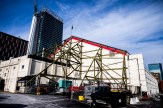Artist Katy Ann Gilmore paints a geometric mural for Northeastern’s Public Art Initiative

If the hypnotizing flow of escalator stairs could be captured in a mural, it would look something like Katy Ann Gilmore’s latest work, “Tethered in Space,” in the Snell Engineering Center on Northeastern’s Boston campus.
“I don’t want people to go cross-eyed looking at this,” Gilmore says, laughing. “But I want people to feel like they could reach into the portal if they wanted to.”
The project is the newest piece in Northeastern President Joseph E. Aoun’s Public Art Initiative, which provides a platform for artists to brighten the Boston campus with their creativity. In the mural, thousands of lines appear to slowly cascade toward a central vanishing point, a technique that requires a steady hand and a lot of calculations.
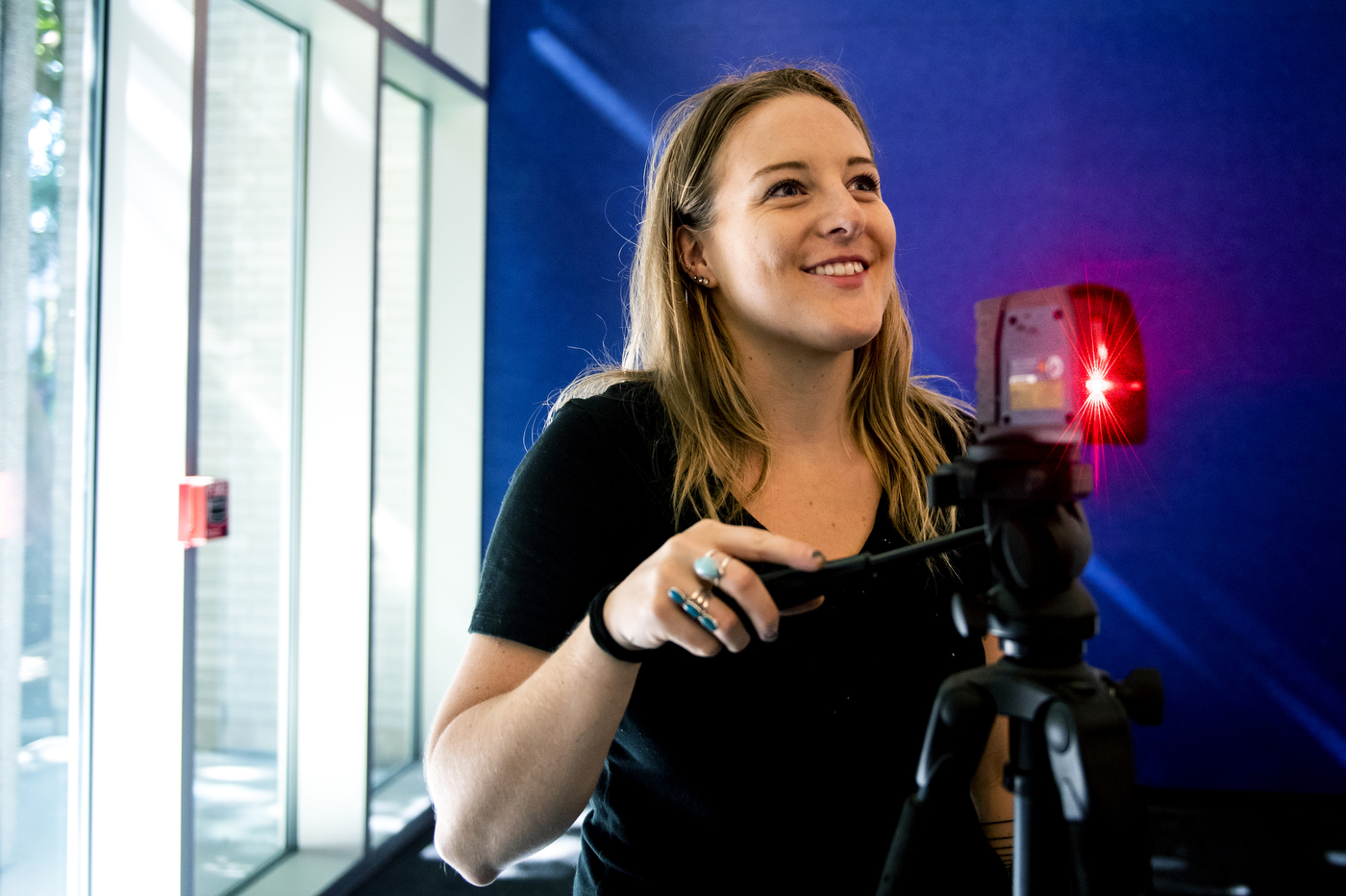
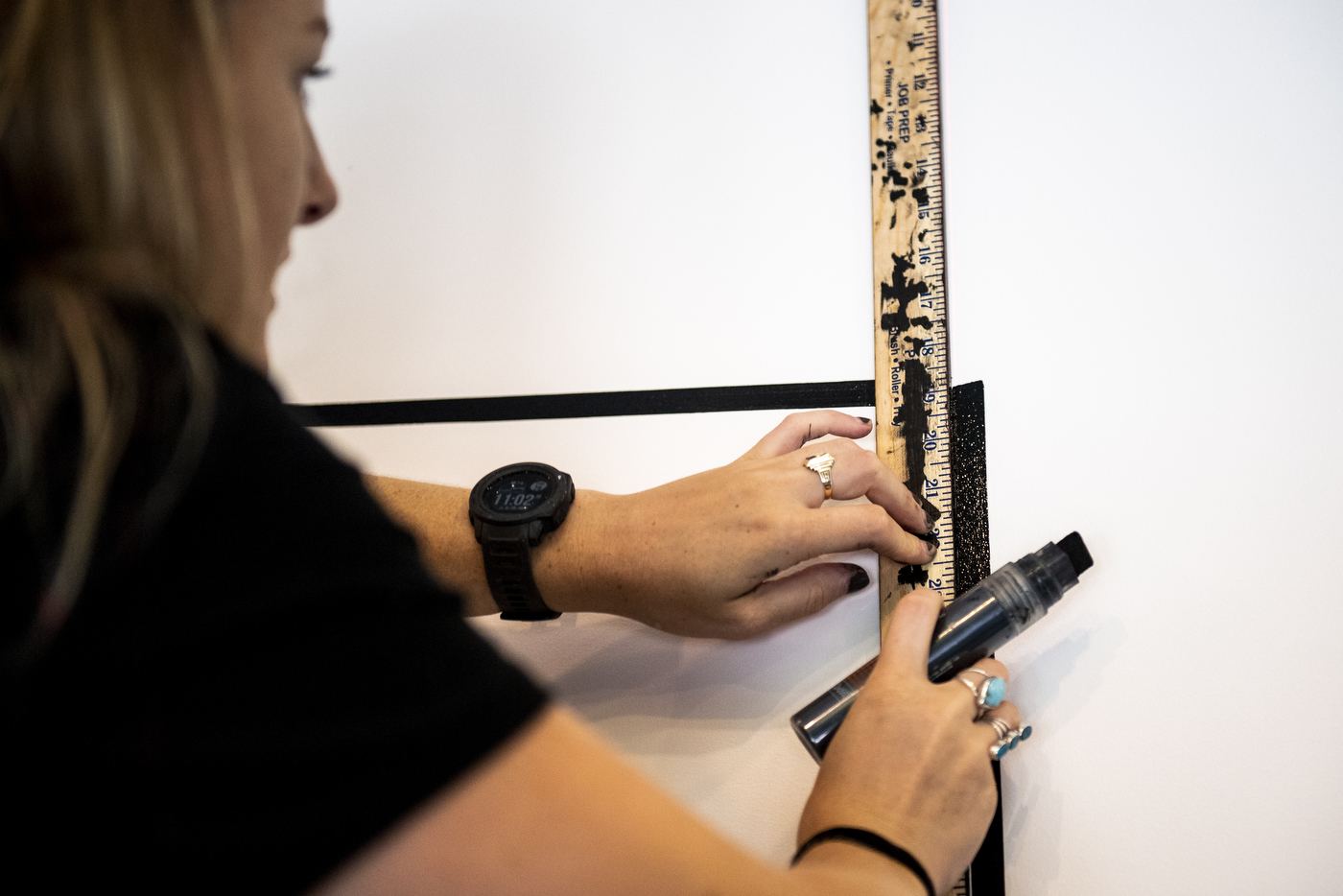
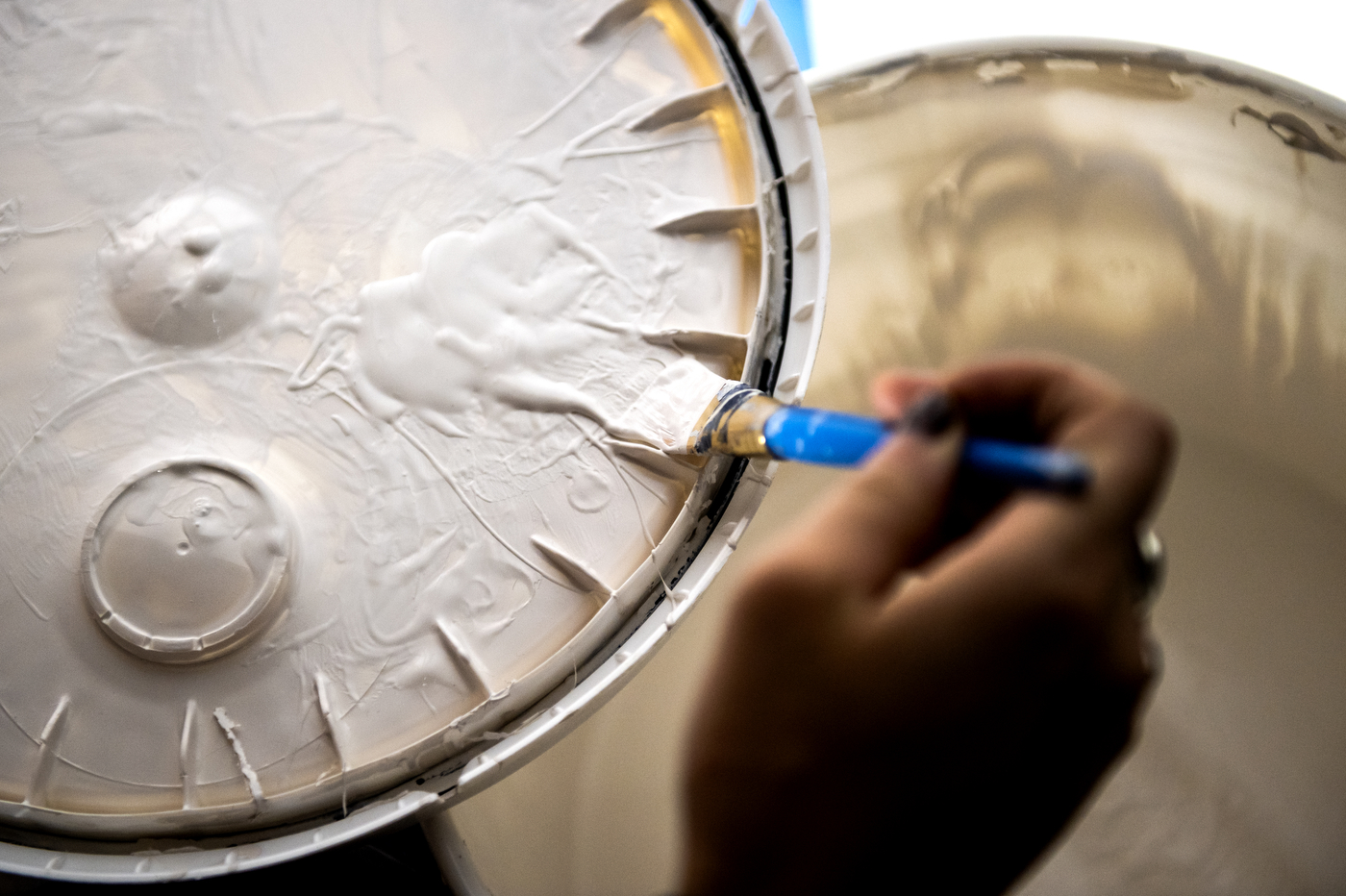
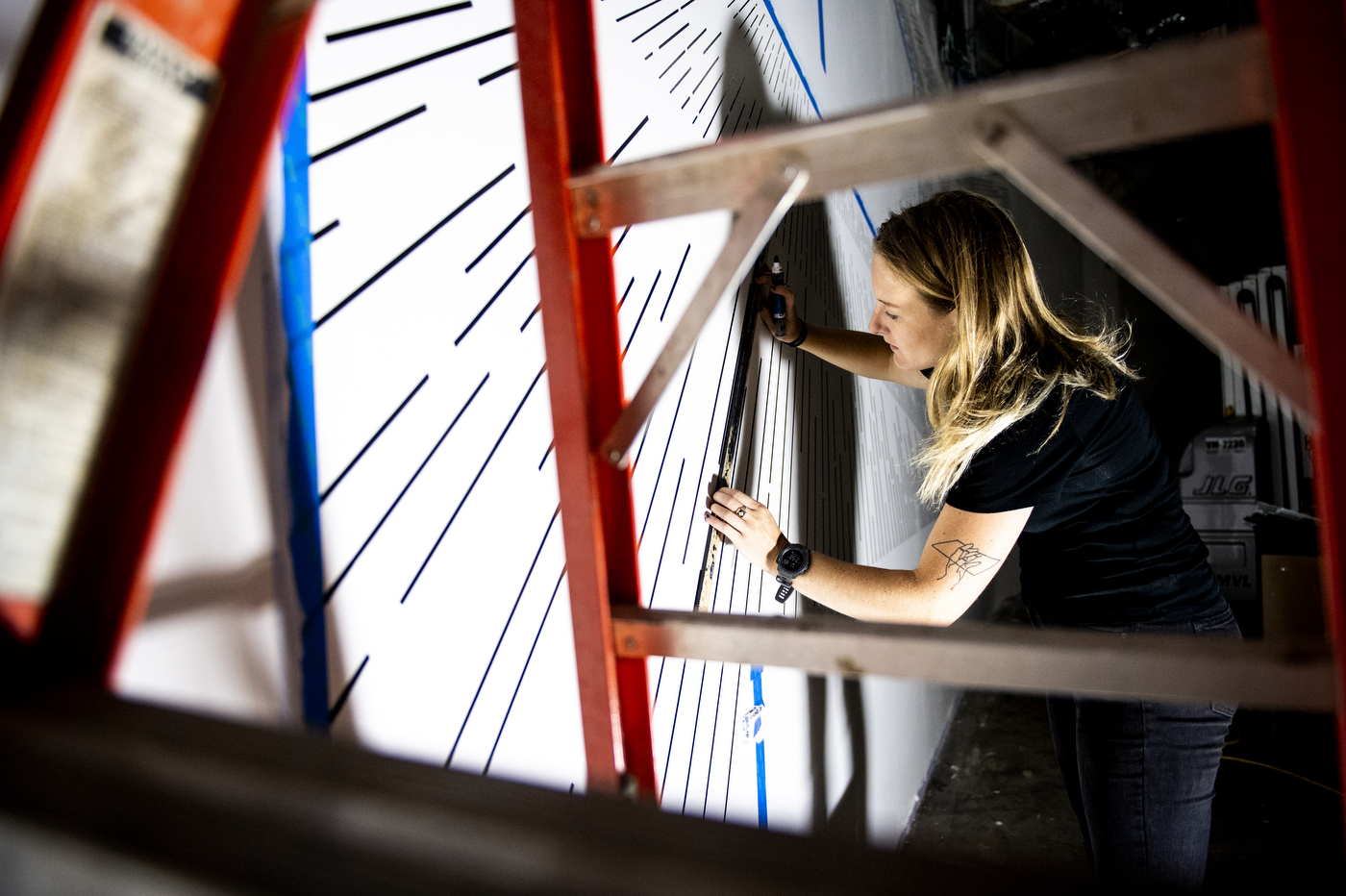
“I actually have a bachelor’s in math. That seemed like the practical thing at the time,” says Gilmore, who also has a master’s degree in fine arts. “I’m grateful now that I get to do what I love while still thinking about the math concepts I enjoy.”
This mural, in particular, required a little more math than usual. It’s the first piece Gilmore has made that isn’t parallel to the floor, which complicates how she measures the angle of each line, because she’s not working within the confines of a square.
Before putting her acrylic paint pen to the wall, Gilmore mocks up what she envisions for the space. The plans for her murals look like blueprints, which seems appropriate, since she draws a lot of her inspiration from architecture.
“When I was in sixth grade, I was quoted in the town newspaper that I wanted to be an architect,” she says. “It’s the intersection of the things that I like—art and math.”

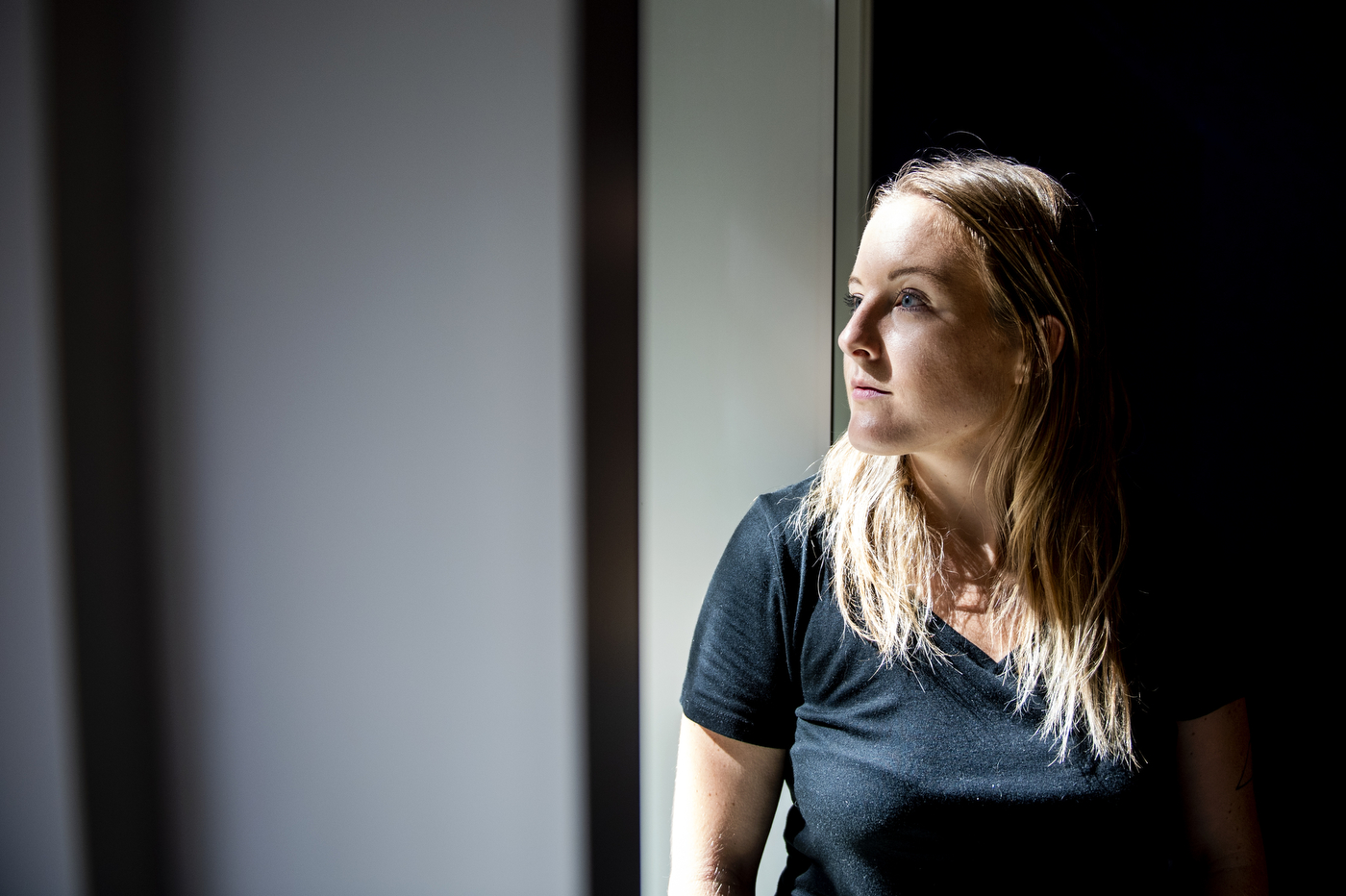
Since perspective is an important element of Gilmore’s work, the design depends on the dimensions of the space she’s painting. In this case, Gilmore’s mural is in a previously underused storage space that has been converted into an area for students to sit in between classes. The mural spans walls and corners, adding extra layers of texture to her seemingly three-dimensional design.
Once she’s ready to begin the mural, Gilmore marks a few foundational points using a laser projector. From there, her process is a very precise game of connect-the-dots. She measures the angles of the lines with her beloved digital level (the “best $30” she’s ever spent) and then runs a thick, black marker along a ruler to cover the points she plotted.
To create the optical illusion, Gilmore tries to keep the distance between and the angles of the lines consistent with the vanishing point. But she doesn’t measure every line.
“I’ll measure one line and then not measure the next three,” she says. “I want the lines to be straight. But not too straight. I don’t want people to look at this and think that a computer did it.”
If something looks like an obvious mistake, Gilmore will touch that up later. But among her favorite things about her murals are the details of imperfection where her marker deviates slightly from the ruler or a little extra paint drips out of line.
“I like leaving traces that a human made this,” Gilmore says. “I’m not perfect. Nothing human is perfect.”
For media inquiries, please contact media@northeastern.edu.
